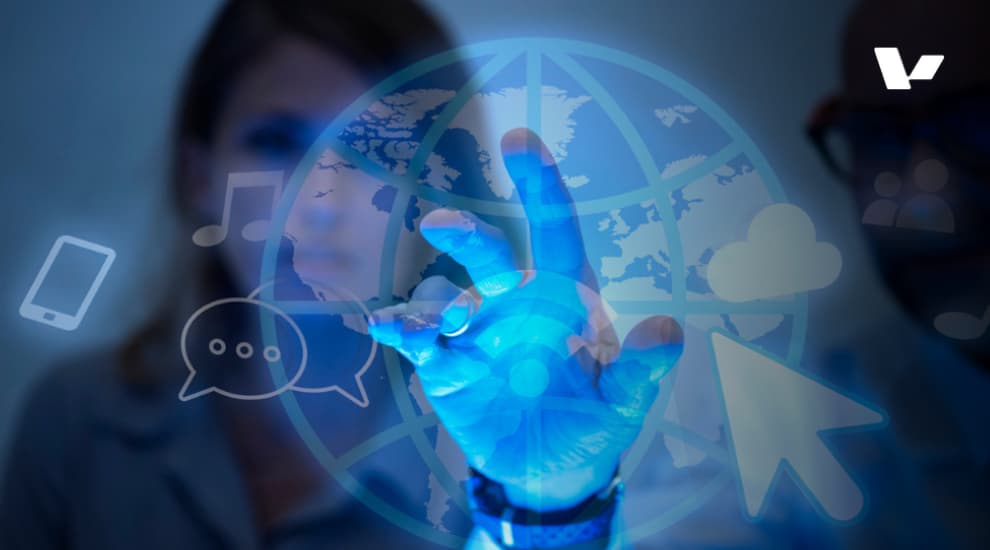Discover how AI is transforming accessibility in the digital world. Learn how technologies like text-to-speech, voice assistants, and machine learning are breaking down barriers for individuals with physical or learning disabilities. At Valere, we're committed to building inclusive products that empower all users, ensuring that accessibility tools are affordable, usable, and bias-free.

On this page
A Personal Journey into Accessibility
Innovative AI Applications for Accessibility
Conclusion
Accessibility in the digital world has come a long way, especially with AI on the scene. This technological advancement is breaking down barriers and creating a more inclusive online environment for everyone, regardless of their physical abilities.
Before transitioning into the software development industry, I saw first-hand how technology can positively impact accessibility in education; more specifically, how assistive technologies empowered students with physical or learning disabilities,enabling them to participate actively in their learning. My eight years in the school system, accompanied by my alma mater’s emphasis on living a life focused on serving others and contributing to the greater good, are a large part of why I’m here at Valere, a company whose mission it is to build meaningful and impactful products.
In today's world, AI assistants like Siri and Alexa provide valuable support for individuals with limited vision or mobility, and those who struggle with reading and writing. For students facing these types of limitations, voice commands became essential tools in their daily lives. Text-to-speech and speech-to-text technologies played a pivotal role in their ability to access and engage with content independently, making them more active participants in their learning. Consider the impact of an application that can read text aloud instantly or transcribe conversations as they happen. For some, it’s just a simple time-saving advantage but for others it’s their opportunity to connect with the rest of the world. Such technologies are transforming accessibility and opening new communication and information access.
Applications like Be My Eyes offer innovative solutions, connecting visually impaired users with sighted volunteers for immediate assistance. Microsoft's Seeing AI is another notable example, utilizing AI-driven visual recognition to describe the surrounding environment. These real-time aids significantly enhance users' independence and engagement with their surroundings. Machine learning is excellent because it can tailor tech to individual needs. For example, there are keyboards that adjust for motor limitations or audio descriptions that personalize the visual world for the blind. AI can learn users’ preferences and make things work better for them. But let's be honest, there's still room for improvement. And when it comes down to it, AI is only as good as the data it's trained on. Biased data leads to biased tools, and that's not acceptable when we’re looking to build tools that empower all users, regardless of background or ability.
We need to ensure AI training data is inclusive so accessibility tools work for everyone, with no exceptions. High-tech accessibility tools are fantastic, but they can be pricey, an instant barrier. We need policies and affordable tech solutions to bridge the gap. Everyone deserves access to these tools, and these tools need to learn from everyone. And in order for these tools to learn from everyone and to truly empower all users, these technologies must also prioritize usability. This means creating intuitive interfaces that are easy to navigate, regardless of a user's tech-savviness. Ensuring seamless integration with existing devices and platforms is equally important, so that users can incorporate these tools into their daily lives without friction.
At Valere, we're passionate about using AI for good, and our efforts have been featured by Upwork. To learn more about our mission and impact, I invite you to read our story: Using AI at Valere Labs.
Accessibility in the digital world has come a long way with AI. But the journey isn't over. We must keep working on bias, affordability, usability, and integration. By tackling these challenges, AI can genuinely empower everyone, regardless of ability.

Share